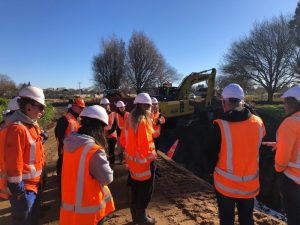For project engineer Lana Sheerin, a scholarship out of high school has led to a rewarding career in the civil engineering industry.
Lana will have been with Connell for a year in October after joining from civil engineering firm Fulton Hogan.
“I joined Connell for the opportunity to grow and progress in my career. In a company like Connell, there’s always more to learn, more to do and more exposure.
“A key thing for me is growth, and not just personally, but also the chance to put together teams where everyone has an opportunity to grow and learn. I think that benefits the civil industry overall.”
Lana, originally from South Auckland and now living in Waikato, said her career in the sector began with a high school scholarship and mentorship programme through her high school, Mangere College.
Following a three-year scholarship with Fletcher Building, she then graduated with honours with a Bachelor of Civil Engineering from Auckland University.
Lana gained valuable experience with civil engineering firms around the North Island and worked on key projects such as the Hamilton Expressway.
She joined Connell Contractors last October.
There’s a lot for someone new to the sector to learn and a lot to do at Connell, says Lana.
“I’m enjoying working on one of our current projects in Whitianga [Coromandel]. It’s been great to be part of it from beginning to end and managing the project, from the initial tender stage through construction, until we close it out and hand it over to the client.”
She said she made the move to Connell Contractors to develop new skills and explore new projects, including some exciting work in the renewable energy sector, which she said will play a key role in the future of civil engineering.
“I think renewable energy is the direction New Zealand is moving into. The construction industry is turning to more sustainable options and a lot of investors are wanting to invest in New Zealand and make it more sustainable.”
Creating a strong team culture and offering valuable opportunities to learn and grow from others is key to encouraging more women to enter the industry, said Lana.
She said being a woman in a male-dominated industry would have been unusual 20 years ago, but nowadays, it was becoming more common to see women in the field.
“I was once the only woman in my office. Now, some offices are 90 percent women.
“I think it’s about what the civil infrastructure industry can offer women. Previously, there weren’t any kind of mentorship programmes encouraging women to get into the industry. There are more of those around now offering visibility for women in the industry.”
She said the career pathways that exist nowadays are prompting more women to pursue civil engineering as a career.
“Most of my friends in the industry are women and I’ve worked on a lot of projects that are more women based than men in some settings. We need to keep building on that to establish it as part of the next generation.”

















